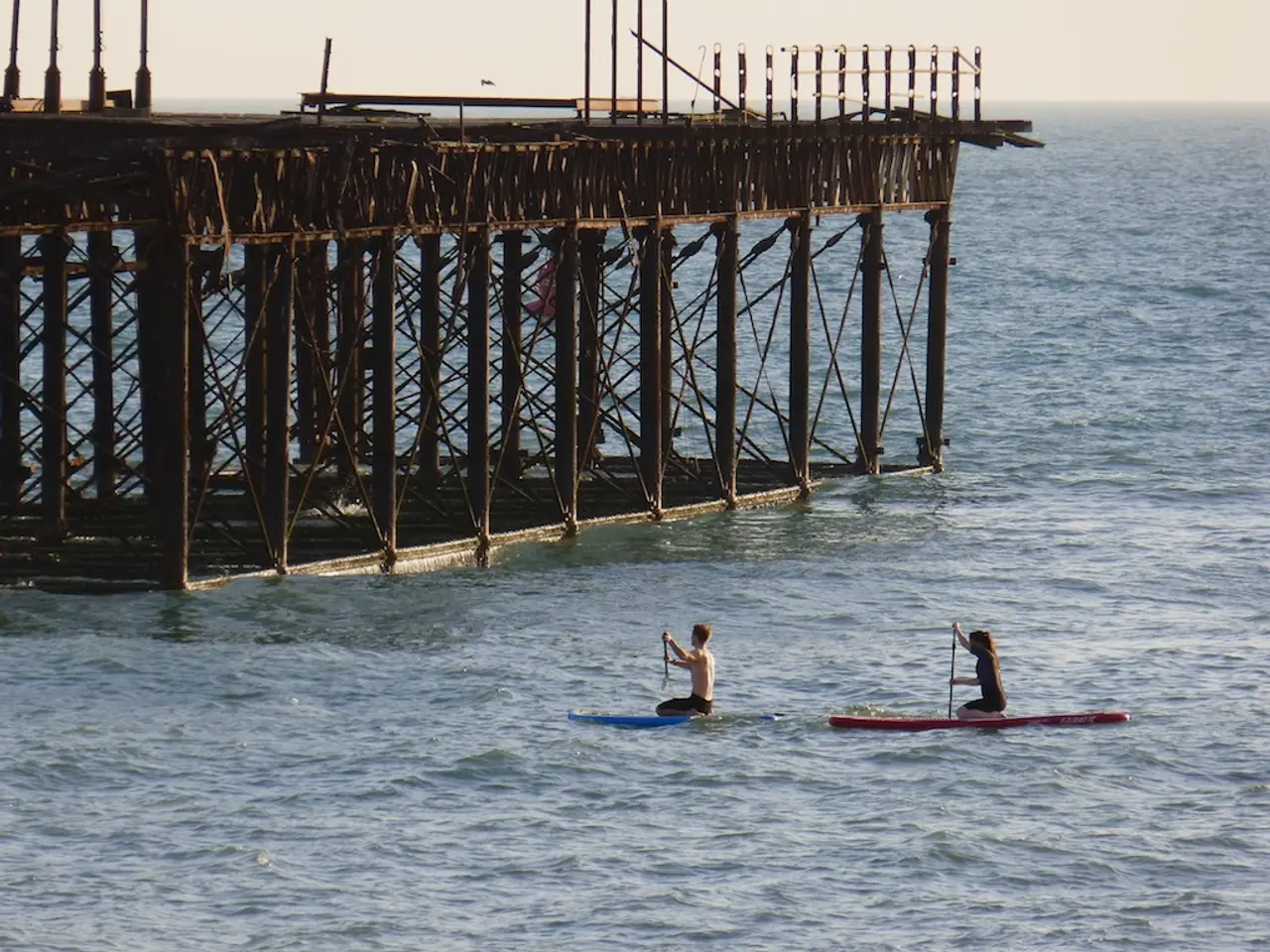Enchanted Atlantic Island of Mont-Saint-Michel: France's Monastery Abode
In the heart of Normandy, France, the restoration of Mont-Saint-Michel has breathed new life into a historical gem that defies time. For over 1,300 years, this medieval masterpiece has stood on a granite rock, offering a journey through the ages for visitors.
The restoration efforts, which began in earnest decades ago, aimed to restore Mont-Saint-Michel's natural connection to the tides and improve its tidal dynamics. One of the key projects was the construction of a new bridge, which replaced the old causeway that had been in place since 1879.
The removal of the old causeway, and the subsequent opening of the new bridge in 2014, allowed for the free flow of water around the island. This change has significantly reduced the accumulation of silt and improved the efficiency of the tides, helping to dissipate silting around the island. The new bridge, elevated and designed to allow water to pass underneath, ensures that the area around Mont-Saint-Michel remains open to tidal flow, maintaining the natural balance of the bay.
The restoration has also reconnected Mont-Saint-Michel with the sea, making it an island again during high tides. This reconnection is both a natural phenomenon and a tourist attraction, as it was rare for the island to be fully surrounded by water before the restoration. Visitors now cross this bridge to reach the island, with a footpath and shuttles from a new car park located about 2.5 kilometers from the island.
The new setup has also had a positive impact on the island's connection with the mainland. Mont-Saint-Michel, unique in that it connects to the mainland at low tide and becomes an island at high tide, has been restored to its original state. This restoration has not only preserved the island's natural beauty but also enhanced its appeal as a tourist destination.
On rare occasions, the new bridge experiences submersion during dramatic "supertides," providing tourists with awe-inspiring displays of nature. The sound of church bells and the Atlantic wind are common experiences while exploring Mont-Saint-Michel, a UNESCO World Heritage site and one of France's biggest tourist attractions.
The architectural complex of Mont-Saint-Michel, a unique blend of Gothic, Romanesque, and Classicism styles, spans multiple centuries. Benedictine monks moved into Mont-Saint-Michel in the 10th century and expanded the abbey, constructing a granite wall. Mont-Saint-Michel's origins date back to 708, when Bishop Aubert of Avranches had a vision of the Archangel Michael instructing him to build a church.
Over the centuries, Mont-Saint-Michel became one of Europe's most significant pilgrimage sites, with French kings like Louis IX, Francis I, and Charles IX visiting to pray. The island, initially a heavenly mission, later became a pilgrimage destination for kings. Mont-Saint-Michel was also a popular wedding venue for nobles, including the Norman Duke Richard II.
Visiting Mont-Saint-Michel today allows one to walk through centuries of European history. The narrow streets and halls of this former Benedictine abbey offer a glimpse into the past, while the sound of church bells and the Atlantic wind serve as a reminder of the island's enduring connection to the sea. The silhouette of Mont-Saint-Michel can be seen slicing through the sky from kilometers away, a testament to its timeless beauty.
The restoration of Mont-Saint-Michel also embraces the concept of an enhanced 'lifestyle', offering outdoor-living experiences through its reconnection with the sea during high tides. The home-and-garden landscapes have been maintained to showcase the historical significance of this UNESCO World Heritage site, making it ideal for travelers seeking cultural experiences. Additionally, the new bridge, designed to accommodate tides and maintain the natural balance of the bay, might serve as an inspiration for architects in their travel-related projects promoting outdoor-living and sustainable practices.






